Pet
Do Cats Love Their Owners? 12 Heartwarming Signs Your Cat Adores You
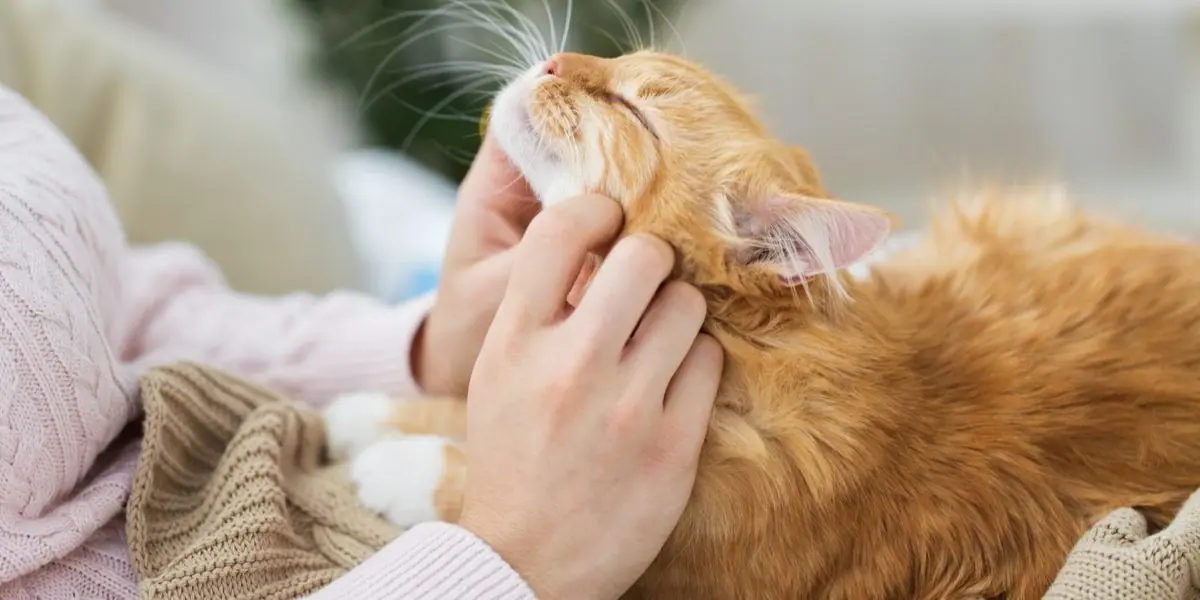
Introduction
Every human who lives with cats wants to know “Do cats love their owners?” Cats without question exhibit affection toward their owners. Although cats maintain an independent nature and mysterious demeanor they have distinct ways of expressing their love for humans by building deep connections. Observing your cat through following your movements and purring as well as blinking slowly demonstrates their profound affection.
The following article examines twelve specific tender clues which demonstrate your cat holds affection toward you and views you as their loyal friend and potentially considers you their mother figure. The following text explores the intriguing feline expressions of affection and bonding.
1. Following You Everywhere
The strongest evidence that cats have affection for their owners appears when they continuously follow you throughout your house. Your cat sticks beside you throughout your movements between kitchen and bathroom areas so they can perceive you as their protective source. The same tactic kittens use to follow their mothers demonstrates that cats trust and love you.
2۔ Seeking Cuddles and Purring
A cat’s purring sound gives comfort to others and functions as an expression of affection. Cats show their deep bond with you when they settle in your lap while purring. Your cat displays this behavior in the same way kittens relate to their mothers to communicate their feelings of security and affection.
3۔ Sleeping on Your Lap
When cats pick your lap for rest they demonstrate their love together with trust for you. Cats assume this postural position similarly to how kittens seek safety by resting against their mother. Your cat lies down on you to demonstrate their perception of you as a secure warm being.
4۔ Bringing You Gifts
Your cat shows their appreciation through delivering tiny gifts whether it is toys or prey items to you regardless of having an indoor cat. The wild behavior of mother cats delivering food to their kittens explains why your cat presents you with gifts. This serves as their heartfelt expression of gratitude. The act showcases their unique way of showing love through positive intent.
5۔ Gently Licking and Nibbling
Cats show their family affection by licking you and mildly nibbling your skin. By grooming you cats recreate the behavior they use to maintain contact with their mothers which indicates their strong affection. Your cat shows their bond reinforcement when they groom you thus stating “You belong to our family.”
6۔ Kneading with Their Paws
Cats retain the kneading behavior from their kitten years during which they used the action to stimulate milk production from their mother. Your cat displays lap or clothing kneading behavior as a way to express deep affection toward you. When they knead on your lap it indicates that they perceive you as a safe sanctuary and security source just like their mother does for them.
7۔ Rubbing Against You
The cat marks you with their scent when they choose to rub against your body. Through this motion your cat asserts your belonging to their territory as well as demonstrating their affection. Your cat uses the scent glands located in its cheeks to establish its bond with you through the act of touching its face against your skin. The feline gesture is equivalent to giving a hug which symbolizes both their claim on your possession and their experience of feeling secure with you.
8۔ Begging for Food with Soft Meows
Your cat will emit soft meows to express their hunger due to their understanding that you provide for them. The behavior displays how kittens obtain sustenance from their mothers. Your cat uses gentle meows as signs of trust and dependency to display that they feel safe in your protection.
9۔ Following Your Voice
Cats do not understand human words but they excel at sensing variations in human vocal sounds. When your cat both eyes and ears on you while you speak it demonstrates their desire to communicate with you. Your love and engagement results in a strong connection with your cat.
10۔ Showing Their Belly
Cat bellies represent the animal’s key area of vulnerability making exposure an observable sign of genuine trust between the cat and the human. Your cat displays their belly to give permission for you to engage in affectionate ways. The act shows their feelings of safety and love toward you.
11۔ Greeting You at the Door
Your cat demonstrates they have missed you through both vocal meowing combined with wagging their tail after your daily departures. Your presence fulfills two essential needs for them because they consider you vital to their life for safety and bonding. The welcoming behavior serves as their method of expressing both happiness to see you and a warm welcome for your arrival.
12۔ Slow Blinking
A slow eye closure from your cat while looking at you indicates deep love and trust between you. A feline slow blink acts as an equivalent to affectionate gestures such as hugging or kissing. Responding with a deliberate eye blink helps reinforce the bond through which you express your love to your cat.
Conclusion
In the end, the answer to the question “do cats love their owners?” Absolutely! Every behavioral gesture such as being followed around and purring shows that cats truly love their owners. The twelve indications demonstrate that your cat loves you and considers you an essential source of comfort and security and love.
Paying attention to these behaviors signifies that your cat holds a special relationship with you. Stepping into cat love classifies as a prime reason why life offers such pleasure.
Have you noticed any of these signs in your pet cat? Leave your tales of feline affection in the comment section and explain how your fuzzball reveals its affection.
Also read: https://theusacorner.com/money-6x-mastery/
Pet
How Long Do Horses Live? Unlocking the Secrets of the Lifespan of Horses
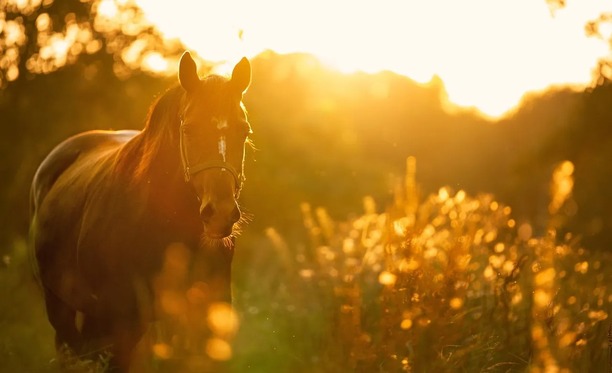
Introduction
Horses have coexisted with humans through thousands of years at least primarily through their role as devoted friends in addition to competitive athletes and productive partners. Amateur horse enthusiasts ask How long do horses live? more than anything else. The lifespan of horses depends on their breed identity along with their receiving care and their life experiences. This article explores the life-span factors that affect horses while providing methods for extending their healthy longevity.
The General Lifespan of Horses
A quick answer to How long do horses live is between 25 to 30 years. Veterinary medical progress and better nutritional practices and enhanced equine care have substantially increased horse longevity together with long-term wellness. Thorough proper care enables horses to reach ages exceeding 40 years.
Ponies along with Arabians and particular horse breeds demonstrate exceptional longevity by reaching beyond average lifespan numbers. Draft horses together with other large breeds experience shorter overall life expectancies. Research shows the importance of identifying the factors that affect horse lifespan because of their variable and inconsistent life spans.
Factors That Influence How Long Horses Live
Several factors determine a horse’s lifespan, including genetics, breed, care, and environment. Let’s explore these in detail:
1. Breed Differences
The lifetime expectancy of horses significantly depends on their breed.
- Ponies tend to survive longer than other equine species because they reach forty years and higher. Their small size together with their sturdy character increases their lifetime expectancy.
- Shires and Clydesdales represent draft horse breeds whose average lifespan amounts to 20 to 25 years. The large size of draft breeds causes additional pressure on their joint systems as well as internal body functions resulting in potential health problems advancing at an earlier age.
- Light Breeds including Arabians and Thoroughbreds demonstrate excellent endurance and agility by reaching their 30s with appropriate health care. Arabians are known throughout the world for their remarkable health condition and extended life expectancy.
2. Wild vs. Domestic Horses
Wild horses usually live for a period of 15 to 20 years. Longevity for wild horses remains short because of intolerable environmental settings along with minimal veterinary service and natural predators threatening their survival. The regular medical care together with balanced nutrition and shelter provided to domestic horses leads to extended life expectancy compared to wild horses.
During their existence wild horses actively seek their nourishment and hydration yet they frequently endure droughts in addition to severe weather conditions. Horse health condition exacerbate naturally because they cannot receive veterinary treatment. Controlled environments support domestic horses to thrive because they receive continuous fulfillment of their needs.
3. Nutrition and Care
The life expectancy of a horse directly depends on adequate nutrition. A diet that contains proper proportions of fiber together with vitamins and minerals helps support the health of horses and various systems in their bodies. To achieve proper nutrition horses need a combination of hay together with grains along with fresh pastureland. Veterinary professionals who provide routine care together with dental examinations and vaccinations protect horses from diseases which leads to longer life expectancy.
Dental care stands as vital for horses since their teeth grow endlessly and develop pointed edges which result in eating troubles and ache. The practice of frequent floating helps horses eat correctly to stay healthy and achieve normal weight.
Comparing Horse Years to Human Years
Typically horse owners attempt to calculate what number of horse years corresponds to human years. General principles exist to assist in estimating this comparison but no exact mathematical relation exists between horse and human years.
- A one-year-old horse corresponds to the development stage of a six-year-old child.
- A 20-year-old equine animal corresponds to the human age of 60.
- Horses experience quick aging during their initial years and subsequently their speed of aging decreases with time.
There exists a friendly method to estimate a horse’s age yet factors beyond the comparison include breed type and daily activities which influence their lifespan. The age difference between a well-kept pony at 25 years old and a draft horse of the same age results in diverse aging appearances.
The Impact of Equine Sports on Longevity
Athletic horses participating in show jumping along with dressage and racing develop physical stress that leads to reduced life span potential. The use of correct preparation methods together with routine veterinary examinations and therapeutic interventions decreases the danger variables associated with these strenuous activities.
Lessen the effects on a horse’s musculoskeletal health by using developed training methods along with tailor-made saddles and specific recovery routines. The intense nature of show jumping and racing causes significant joint and ligament injuries to affect primarily these two horse types. Focusing on horse health enables owners to support their horses both within their activity competitions and through their longer life span.
Maintaining Horse Health for Longevity
To maximize how long horses live, owners must focus on preventive care and overall well-being. Here are some key strategies:
1. Routine Veterinary Care
Routine medical examinations combined with vaccines and parasite treatment for horses are fundamental elements needed to stop illnesses from occurring and detect health concerns during an early stage. Horse vaccinations defend animals from tetanus and influenza infections while deworming medication stops parasite-caused digestive system harm.
2. Proper Nutrition
The dietary needs of a horse should match their age characteristics and breed standards as well as their exercise intensity for optimum health. Special diets containing joint supplements must be provided to senior horses. Older horses who have dental problems or Cushing’s disease should eat feeds that contain fiber and contain minimal sugar amount.
3. Exercise and Mental Stimulation
Exercise that minimizes strain helps preserve your horse’s muscles and their body joints. Quiet exercises including walks along with light trotting together with having time in pasture keep horses active in a healthy way. The overall health of horses improves through social contacts with their peers together with mental stimulation.
4. Therapies and Supplements
Three effective treatments for physical stress include massage therapy as well as chiropractic care and acupuncture. Nutritional supplements like glucosamine and chondroitin support joint health, especially in older horses. Liver supplements provided every day help senior horses with arthritis achieve better movement and increased comfort.
Common Health Risks for Horses
Despite the highest quality healthcare horses might suffer from health conditions which shorten their time on Earth. Some common issues include:
- An untimely delivery of medical attention becomes necessary for horses with colic since this digestive condition proves dangerous for their survival. Affecting horses are the symptoms of abdominal pain along with restlessness and decreased appetite.
- Youthful horses with Cushing’s Disease develop a curled coat along with exceptional thirst.
- Arthritis functions as a degenerative joint disease which reduces mobility because it commonly occurs in elderly horses or those who performed extensive physical activities.
Timely intervention with health care allows owners to help their horses experience both longer and better life quality.
Environmental Factors and Their Impact
Environmental conditions determine how long horses live. Environmental elements together with unfavorable climate conditions and incorrect pasture care result in detrimental health issues for horses. The provision of suitable shelters together with clean water supply and protected grazing areas helps reduce the number of risks that horses face.
In wintertime horses must have heated shelters combined with extra dietary calories to sustain their body heat. Summer requires horses to have shaded areas and plenty of fresh water access in order to prevent both dehydration and heat strain.
Our Responsibility as Caretakers
All horse caregivers are bound by the duty to create a happy, pain-free existence for their horses. A horse’s lifespan reaches its maximum when caretakers provide consistent observations together with quick medical help in an environment that nurtures their health. All types of horses including ponies, draft horses and Arabians remain healthy when you demonstrate care and affection.
Regular daily horse interactions enable you to detect minor wellness changes through both physical appearance and behavioral indicators. The diagnosis and proper treatment during an early stage dramatically enhances their lifestyle quality.
Conclusion
The knowledge of how long horses live enables us to develop better care systems, thus horses become valuable sources of power and attractive companions that show unwavering loyalty. The lifespan of horses depends on their ancestry and their genes but appropriate healthcare combined with the right nutrition and secure surroundings plays the largest role. Health and well-being priorities enable us to guarantee that our equine companions have long rewarding lives.
You need answers regarding the longevity of horses along with appropriate care practices. Post your ideas about horse life spans in the comment section. Together we should appreciate the extended lives of magnificent creatures.
Frequently Asked Questions (FAQs)
- Can horses live longer than 40 years?
Yes, though it’s rare. Some ponies and well-cared-for horses have lived into their 40s. - What is the oldest recorded horse?
The oldest recorded horse was Old Billy, who lived to be 62 years old. - How can I tell if my horse is aging well?
Look for signs like good mobility, a healthy appetite, and a shiny coat. Regular vet check-ups are also essential. - What should I feed an older horse?
Senior horses benefit from high-fiber feeds that are easy to chew, along with joint and bone health supplements. - Do wild horses live shorter lives than domestic horses?
Yes, wild horses face challenges like predators, harsh weather, and limited access to food, resulting in shorter lifespans. - How can I reduce my horse’s stress?
Provide consistent routines, proper shelter, and regular interaction. Turnout time and companionship also help. - Does exercise help horses live longer?
Yes, low-impact exercise strengthens muscles and joints, reducing the risk of age-related issues and improving overall health.
also read; Mallory Plotnik Review
Pet
Why Do Cats Hate Water? Exploring the Reasons Behind Their Aversion
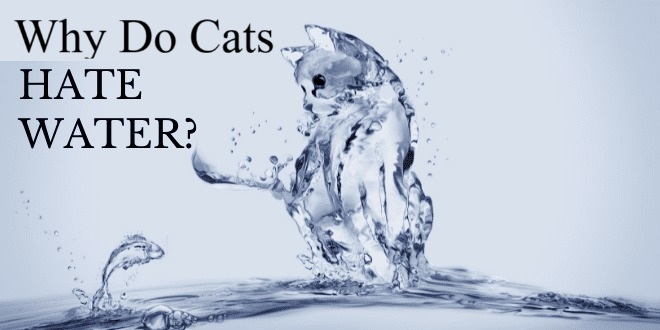
Introduction
The dislike of water stands as one of the most distinctive behavioral characteristics in cats. Participating in bathing or causing hesitation while encountering moisture stands as a typical characteristic among most felines. But why is this the case?
Numerous factors linked to evolution and biology along with natural feline instincts determine why cats develop water aversions.
Most cats demonstrate remarkable abilities to escape water whereas some exceptions will show tolerance or display an interest in water contact. This piece explores the recognizable feline aversion to water by analyzing its scientific causes and examining the exceptions among particular breeds of cats.
At the completion of this guide you will understand everything about Why Do Cats Hate Water also finding strategies to ease water-based experiences for your kitten.
Evolutionary Origins of Cats and Water
Desert Ancestors and Limited Exposure to Water
The African wildcat (Felis lybica) provided the ancestor for modern domestic cats (Felis catus) while it resided in arid desert areas. Early cats faced poor water conditions in their environments therefore they showed little interest in engaging with large bodies of water. The breeding of dogs for water retrieval resulted in retrieving ducks skills but cats have never evolved this natural swimming behavior.
Survival Instincts: Water as a Potential Threat
Cats develop natural wariness of standing water in their natural habitat because predators including crocodiles and snakes might hide beneath the water surface. The instinctive fear passed from one generation to the next constitutes the basis of Why Do Cats Hate Water. Running water sounds will activate alert responses for felines because such sounds indicate concealed threats hidden within unknown hazardous environments.
Comparison with Other Feline Species
Every wild cat does not follow an avoidance pattern when it comes to water interaction. Big cats demonstrate exceptional swimming abilities because tigers and jaguars use water spaces for hunting along with heat regulation. The natural habitats of these species contained plentiful water sources because their ancestor domestic cats originated in dry desert environments.
The Role of Fur and Temperature Regulation
How a Cat’s Fur Reacts to Water
Unlike otters together with ducks, cats possess fur which does not repel water. The fur of a cat functions by absorbing the water it contacts which results in heavy weight and discomfort. The resistance to move freely due to its weighty condition and the feeling of heaviness because of water exposure provides an additional cause for Why Do Cats Hate Water.
Wet Fur and Body Temperature
Due to their temperature difference from humans which measures 101-102.5°F, cats rely on their fur layer as insulation. Dampness affects a cat’s fur insulation capability so their body becomes hypersensitive to cold exposure and feels extremely cold and defenseless. Cats detect temperature variations strongly thus experiencing unpleasant sensations because of it.
Grooming Disruption
Cats use half of their active time period to maintain their personal hygiene through self-grooming. Water affects the natural grooming process because it causes their fur to clump together thus interfering with their production of natural oils. The discomfort from water interrupting their grooming process drives cats to maintain their negative impression of water.
Sensitivity to Smell and Sound
Acute Hearing and the Sound of Water
The ears of cats perform at high sensitivity to detect sounds at frequencies which remain inaudible to human hearing. The noise of running water as well as splashing and rain often causes overwhelming stress to cats.
Scent Marking and Water’s Effect on Smell
Cats depend highly on scent signals to maintain communication with others. Consecutive scent glands distributed across their cheeks and paws and their tail allow them to establish territorial boundaries. Cats lose their scent markers and feel uncertain in their surroundings because water deletes them leading to the reason Why Do Cats Hate Water.
Chlorine and Chemical Sensitivity
The chemical additives in tap water frequently produce strong odors because they include chlorine or other substances. Because their sense of smell exceeds human capabilities the odors present in tap water become strong enough to cause repulsion in cats.
Negative Past Experiences with Water
Traumatic Bathing Experiences
Following just one unpleasant encounter with water many cats establish a permanent fear that stays with them for life. Such negative water experiences lead cats to completely avoid contact with water.
Fear of Loud Noises (Thunderstorms, Hair Dryers)
Extreme water exposure during circumstances of heightened stress like thunderstorms or during hair-drying sessions tends to augment their fear.
How to Overcome Water-Related Trauma
A negative water experience in cats can be addressed through an approach of gradual sensitivity training. The first step involves permitting your cat to discover a small water-filled bowl at their own speed so they can gain feelings of comfort through positive reinforcement when they stay peaceful.
Instinctual Fear of Drowning
Lack of Natural Swimming Instincts
The primary reason Why Do Cats Hate Water is their inability to paddle like dogs since natural swimming instincts usually elude most felines. After submersion they experience panic followed by rapid movements that leads to unintentional water intake which intensifies their fear.
Body Structure and Buoyancy
The athletic body structure of cats makes swimming challenging due to poor aquatics ability. The minimal air capacity in dogs makes floating skills inferior to other large-bodied aquatic animals.
Can Cats Learn to Swim?
With patience most cats can learn to accept water exposure but they typically stay away from water. The practice of making cats swim will trigger severe stress reactions in them thus being something that owners should avoid.
Breed Exceptions: Cats That Like Water
Turkish Van – The “Swimming Cat”
This scarce canine breed has natural swimming abilities thanks to its water-resistant fur and aficionado for aquatic activities.
Bengal Cats – Fascinated by Running Water
Bengal cats show a preference for faucet games and water fountains as well as short water jumps.
Maine Coons – Tolerant of Water
Anaerobic aerobic exercise and their thick waterproof coat allow some Maine Coons to become more comfortable with water activities.
Other Breeds That May Enjoy Water
- Abyssinian
- Savannah
- Norwegian Forest Cat
How to Safely Introduce Your Cat to Water
When Do Cats Need Baths?
Most cats manage self-grooming and prefer to stay unbathed, however the following conditions may require bathing:
- Long-haired breeds prone to matting
- Cats with skin conditions
- The bathing process applies to elderly or obese cats when they find grooming difficult.
Step-by-Step Bathing Tips
- Use a Calm Approach – Avoid sudden movements.
- Lukewarm Water Only – Extreme temperatures can scare them.
- Gentle Pet-Friendly Shampoo – Never use human soap.
- Reward with Treats – Positive reinforcement helps.
- Dry Thoroughly – Use a warm towel, not a loud dryer.
Alternatives to Traditional Baths
- Waterless cat shampoo
- Damp cloth cleaning
- Grooming wipes
Final Thoughts
By the conclusion, you may have understood Why Do Cats Hate Water? The avoidance of water stems directly from their development as species and natural biological characteristics of their bodies. Cats inherited from desert regions along with delicate fur and natural fear of drowning usually avoid water but certain breeds demonstrate different behavior. Pet owners can gain more understanding when approaching water-related situations since they understand these reasons.
Bath time should remain a rare occasion since most felines only require water for medical purposes when they strongly dislike this experience. Supervised water activities provide encouraging enrichment options for the small number of cats that show water-related interest.
FAQs About Cats and Water
1. Do all cats hate water?
The Turkish Van and Bengal cats belong to the breeds that like water yet domestic cats generally avoid it.
2. Is it possible for owners to teach their cats to develop a liking for water?
Some cats learn to tolerate water exposure after receiving supportive training but pressure plays a role in elevating their fear of water.
3. Why my cat shows behavior of playing with water sources while actively staying dry?
Cats are attracted to moving water sources yet they avoid receiving water on their bodies.
4. Does it pose any danger for my cat to stay completely dry throughout its life?
Cats possess their own cleansing ability and chemical cleanser often requires professional bathing when sickness occurs.
5. At what interval should I provide baths for my cat?
Atypical for most cats they need bathing only during specific situations. Sprinting water on fur causes the drying out of natural oil protection.
Learning Why Do Cats Hate Water lets you manage their care properly while appreciating their natural antipathy to water.
Pet
How Boarding Provides for Your Dog’s Safety and Well-Being
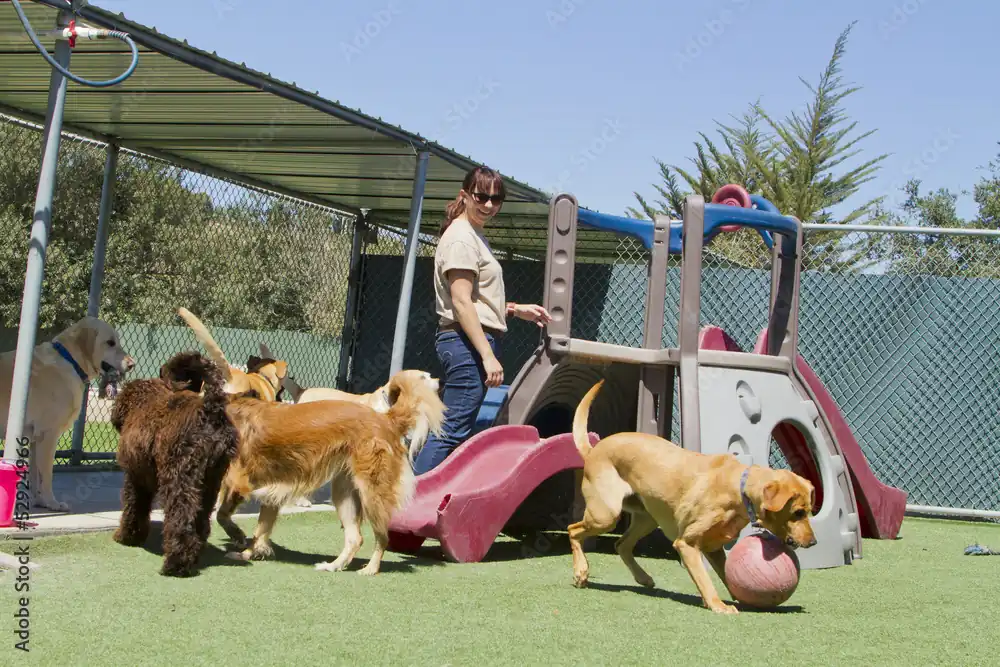
Dog boarding facilities support your pet’s safety and well-being through supervision, structured care, socialization, and enrichment. Your dog enjoys a comfortable space to relax. These areas are designed to feel familiar and welcoming. Here are a few ways in which boarding provides for your dog’s safety and well-being:
Structured Daily Care
Boarding facilities provide consistent schedules for care, including feeding, walks, and rest periods. These routines help dogs adjust to a new environment. Sleeping areas offer comfort and separation when needed, supporting calm behavior throughout the day. Structured care during dog boarding helps dogs settle while away from home.
Supervised playgroups allow dogs to interact with one another safely. Staff monitor these sessions to maintain positive engagement. Dogs can expend energy and engage in mental stimulation within a controlled setting. Playtime encourages social interaction and supports overall well-being.
Professional Grooming Services
Including professional grooming services helps maintain a dog’s coat and overall cleanliness. End-of-stay care leaves dogs clean after eating, playing, and resting. Brushing keeps coats tidy and manages shedding. Nail trimming and ear cleaning support comfort during their stay, and attention to these needs promotes a pleasant boarding experience.
Daily routines at boarding facilities provide structure and predictability, offering a consistent environment. Dogs spend time eating, exercising, playing, or preparing for rest throughout the day. Regular schedules make transitions smoother when returning home. Designated eating and rest areas offer consistent spaces for dogs in new surroundings.
Combining grooming with structured routines supports a well-rounded boarding experience. Scheduled activities encourage movement and engagement, while grooming keeps dogs clean and comfortable. Dogs have spaces for rest, meals, and play throughout the day. These practices help dogs feel settled and cared for while away from home.
Kennel-Free Accommodations
Kennel-free boarding in the centers provides comfortable accommodations. Dogs stay in rooms or suites instead of cages or pens. Sleeping areas replicate home environments for rest, and playrooms provide a space for supervised activity to support movement. With space to walk, play, eat, rest, and interact, these kennel-free setups offer opportunities for canine care during boarding.
Boarding programs also include activities that engage dogs physically and mentally. Daycare adjusts play to energy levels and individual preferences. Puzzle toys encourage problem-solving, while agility courses provide exercise and skill-building. Group interactions add social engagement, and quiet periods allow dogs time to recharge between activities.
Temperament Assessment Trials
Behavioral assessments of new dogs help staff understand their energy levels, play styles, and social tendencies. This information allows boarding facilities to organize playgroups safely and manage group sizes effectively. Observing interactions provides insight into how dogs adjust to new environments and guides staff in providing attentive care. Detailed evaluations support individualized handling while promoting a safe and comfortable experience for all dogs in the facility.
Discover Dog Boarding Today
Look for kennel-free safe areas, play routines, social play groups, and on-site grooming when choosing dog boarding facilities. Meeting with staff members allows you to request forms to visit and assess boarding levels effectively.Boarding centers with these facilities support your dog’s safety and care while you are away. Enroll your dog in a boarding facility today.
Blog
Riding Crop Guide: Types, Uses & Training Tips for Horse Riders
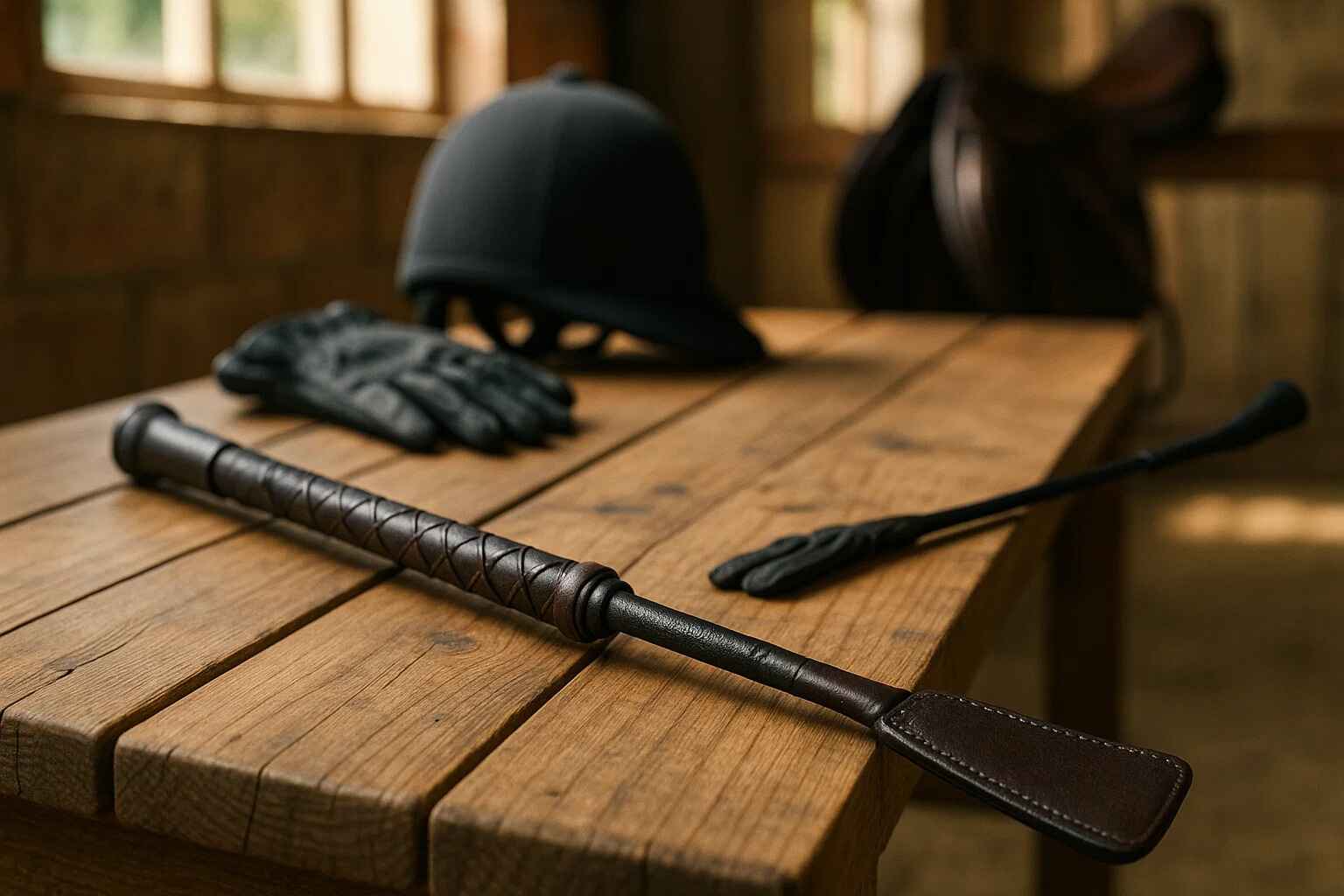
Introduction
The riding crop stands as one of the most misunderstood tools in equestrian sports. Far from being a harsh instrument, a properly used riding crop enhances communication between horse and rider. This comprehensive guide explores everything you need to know about riding crops, from their historical significance to modern applications. Whether you’re a beginner rider or seasoned equestrian, understanding when and how to use this tool will improve your horsemanship skills and deepen your partnership with your horse.
What is a Riding Crop and Its Purpose
A riding crop is a short whip designed to provide gentle reinforcement during horse training and riding. Unlike traditional whips, crops are typically 18-26 inches long with a leather loop handle and a flat tip called a keeper.
The primary purpose extends beyond mere correction. Crops serve as communication aids, helping riders deliver precise cues when leg pressure alone isn’t sufficient. They’re particularly useful for training young horses or reinforcing forward momentum.
Modern riding crops emphasize comfort and effectiveness over force. The tool should complement natural aids like voice, seat, and leg pressure rather than replace them.
Types of Riding Crops Available
Several crop varieties cater to different disciplines and preferences:
Traditional Crops: Feature leather construction with braided handles. These offer excellent grip and durability for everyday schooling sessions.
Modern Synthetic Crops: Made from composite materials, these lightweight options resist weather damage and require minimal maintenance.
Dressage Whips: Longer than standard crops (typically 43-47 inches), these allow precise application without removing hands from reins.
Competition-Specific Crops: Different equestrian disciplines have specific requirements for crop length, weight, and design features.
Choosing the Right Riding Crop Size
Proper crop selection depends on your riding discipline, horse’s sensitivity, and personal preferences. Length matters significantly in effectiveness and comfort.
For general riding, 24-inch crops provide versatility across disciplines. Shorter riders or those working with sensitive horses often prefer 20-22 inch options for better control.
Consider Your Horse’s Training Level
Green Horses: Start with shorter, lighter crops to avoid overwhelming inexperienced animals. Gradual introduction prevents negative associations.
Seasoned Horses: May respond well to standard-length crops with consistent application techniques.
Sensitive Breeds: Arabian and Thoroughbred horses often require gentler approaches with lighter crops and softer application.
Proper Riding Crop Technique and Application
Effective crop use requires timing, positioning, and restraint. The tool should reinforce your leg aids, not replace them entirely.
Hold the crop in your non-dominant hand, keeping your thumb on top for control. The keeper should point downward when not in use.
Apply the crop behind your leg in quick, light taps rather than hard strikes. The sound often provides sufficient encouragement without physical pressure.
Timing Your Crop Application
Perfect timing transforms the crop from correction tool to communication aid. Apply pressure immediately after giving leg aids if your horse doesn’t respond appropriately.
Forward Movement: Use the crop when your horse ignores forward-driving leg aids during transitions or when energy decreases.
Lateral Work: Light crop application can encourage proper bend and engagement during side movements.
Always reward positive responses immediately. Horses learn through consistent, clear communication patterns rather than repetitive correction.
Safety Guidelines for Riding Crop Use
Safety considerations protect both horse and rider during crop application. Improper use can damage trust and create behavioral issues.
Never use the crop in anger or frustration. Emotional responses lead to harsh application and negative training outcomes.
Physical Safety Measures
Grip Security: Maintain proper grip to prevent dropping the crop during rides. Leather loops prevent accidental loss.
Body Positioning: Keep crops away from your horse’s head and eyes. Accidental contact can cause injuries or fear responses.
Equipment Inspection: Check crops regularly for wear, cracks, or damage that might cause injury during use.
Consider wearing gloves for better grip control, especially in wet conditions or during intensive training sessions.
Training Benefits of Riding Crop Use
Strategic crop application enhances training efficiency across multiple areas. When used correctly, crops accelerate learning and improve communication clarity.
The tool helps establish clear boundaries and expectations during ground work and mounted exercises. Horses learn to respect personal space and respond promptly to cues.
Performance Enhancement
Energy Maintenance: Crops help maintain consistent energy levels during long training sessions when horses naturally tire.
Precision Training: Allows riders to target specific muscle groups or encourage particular movements during advanced exercises.
Competition Preparation: Familiarizes horses with crop presence, preventing startled reactions during competitions where crops are permitted.
Regular, appropriate use builds confidence in both horse and rider partnerships.
Common Riding Crop Mistakes to Avoid
Many riders unknowingly misuse crops, creating negative training outcomes. Understanding common mistakes prevents developing bad habits.
Overuse: Constant crop application desensitizes horses and reduces effectiveness. Use crops sparingly for maximum impact.
Poor Timing: Delayed application confuses horses about which behavior triggered the correction.
Emotional Misuse
Frustration Reactions: Using crops when angry leads to harsh application and damaged trust between horse and rider.
Punishment Focus: Viewing crops as punishment tools rather than communication aids creates negative associations and fear responses.
Inconsistent Application: Varying pressure and timing confuses horses and slows training progress significantly.
Remember that patience and consistency produce better results than forceful correction methods.
Maintaining Your Riding Crop Properly
Proper maintenance extends crop lifespan and ensures safe operation. Regular cleaning and inspection prevent equipment failures during critical moments.
Clean leather crops with appropriate conditioners to prevent cracking and maintain flexibility. Store crops in dry locations away from extreme temperatures.
Storage and Care Tips
Hanging Storage: Prevents warping and maintains proper shape during storage periods.
Regular Inspection: Check for loose keepers, cracked handles, or worn grip areas that might cause accidents.
Replacement Schedule: Replace crops showing significant wear before they become safety hazards.
Well-maintained equipment performs better and provides consistent results during training sessions.
Legal and Ethical Considerations
Understanding regulations governing crop use prevents violations during competitions and ensures ethical treatment of horses.
Different equestrian organizations maintain specific rules about crop dimensions, materials, and permitted usage during competitions.
Competition Regulations
Dressage Rules: Limit crop length and restrict usage during certain test levels and movements.
Jumping Regulations: Specify maximum dimensions and weight requirements for competition-legal crops.
Breed Show Standards: May have unique requirements based on traditional practices and safety considerations.
Always verify current regulations before competing, as rules change periodically across different governing bodies.
Frequently Asked Questions
What length riding crop should a beginner use?
Beginners should start with a 24-inch crop, which provides good control without being overwhelming. This length works well across most disciplines and horse types.
Can riding crops hurt horses when used properly?
When used correctly with light pressure and proper timing, riding crops don’t cause pain. They provide gentle reinforcement similar to a firm pat.
How often should I replace my riding crop?
Replace crops when you notice cracked handles, loose keepers, or significant wear. Well-maintained crops typically last 2-3 years with regular use.
Are riding crops allowed in all equestrian competitions?
Most disciplines permit crops, but specific regulations vary by organization. Always check current rules for length, weight, and usage restrictions before competing.
Should I use a crop during my first riding lessons?
Most instructors recommend learning basic aids first. Crops are typically introduced after students master leg and seat aids effectively.
Conclusion
Mastering riding crop usage transforms this simple tool into a powerful communication device that enhances your equestrian journey. Remember that crops supplement, never replace, fundamental horsemanship skills like proper seat, leg aids, and voice commands.
The key to successful crop use lies in timing, restraint, and respect for your horse’s learning process. Start with gentle applications, maintain consistency, and always prioritize building trust over achieving immediate results.
Whether you’re training a young horse, refining advanced movements, or preparing for competition, the riding crop serves as an invaluable aid when used thoughtfully. Focus on clear communication, immediate rewards for positive responses, and maintaining the partnership that makes equestrian sports so rewarding.
Take time to practice proper technique, invest in quality equipment, and never hesitate to seek guidance from experienced trainers. Your horse will appreciate the thoughtful approach, and you’ll see improved responsiveness and cooperation in all your riding endeavors.
Ready to improve your horsemanship skills? Explore our comprehensive guide on leg aids and seat position to complement your crop usage techniques. Share your experiences with riding crops in the comments below!
Why EmergingTechs.net Stay Updated Always is Your Tech Advantage

 Health & Fitness6 days ago
Health & Fitness6 days agoGastric Bypass Abroad: Combining Travel With Life-Changing Weight Loss

 Health & Fitness6 days ago
Health & Fitness6 days agoPhenetrine Reviews (Amazing Results or Just Marketing?)

 Blog6 days ago
Blog6 days agoExploring Larnaca: The Best Sightseeing Choices by the Sea

 Blog6 days ago
Blog6 days agoProtocolo Operacional Padrão: How to Standardize, Train, and Win Audits












